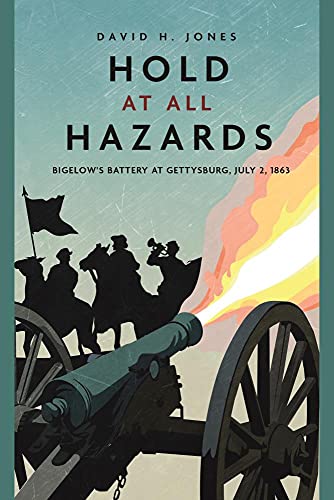Hold at All Hazards: Bigelow’s Battery at Gettysburg, July 2, 1863
This narrative highlights a specific seminal battlefield action that contributed to the final outcome of a much larger conflagration: that being the three-day battle around the town of Gettysburg, July 1-3, 1863. However, what transpired on that day, at a great personal cost to so many in the Light Artillery, was not wrought by luck or guile, but by the skill, bravery, and determination of ordinary men thrust into a maelstrom.
Hold at All Hazards portrays real characters, and Jones uses their actual words teased from personal letters, along with contemporary firsthand accounts, to provide the detail of the men and equipment of the 9th Massachusetts Battery of Light Artillery. Jones grounds his overall story within a landscape of the times within the historical record. While the author’s imagination and literary prowess are clearly at the forefront, so too are the words and actions of long-passed participants.
Taking over a dispirited and disorganized artillery battery, newly appointed Captain John Bigelow institutes rigorous training and discipline as the group is slowly molded into an efficient fighting unit. His methods and tactics are not appreciated by all, with Bugler Charles Wellington being one who disdains the changes.
Dispatched as part of the Army of the Potomac, the battery hard marches into the inferno unfolding at Gettysburg. Within a short time, they are engaged. Ordered at a critical juncture to thwart a Confederate advance that would turn the line, the men of the battery rise to the occasion and do indeed “hold at all hazards”. Heroes emerge, even though lives and limbs are lost to buy time so that a Union military disaster may be averted.










